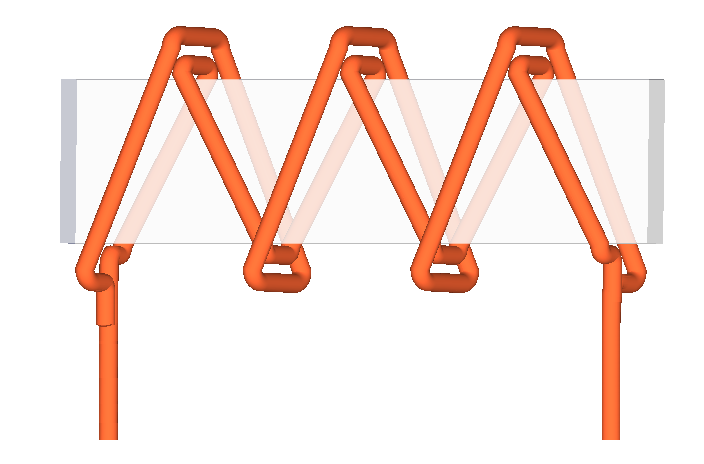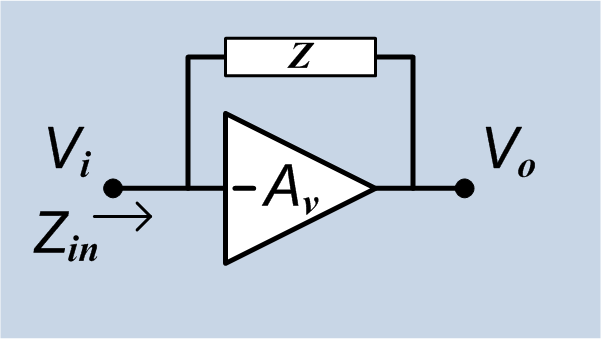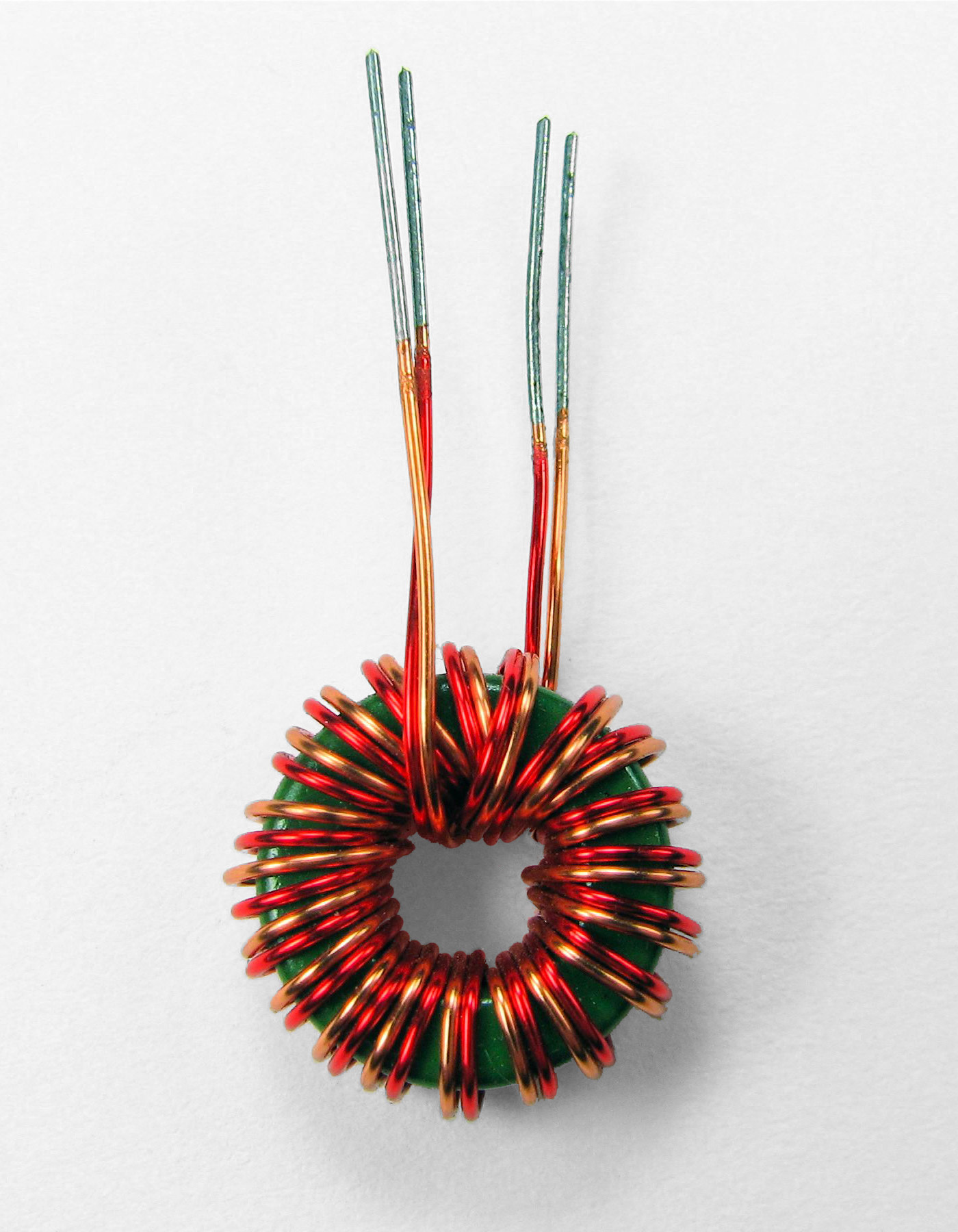|
Ayrton–Perry Winding
An Ayrton–Perry winding (named for William Edward Ayrton and John Perry) is a type of bifilar winding pattern used in winding wire on forms to make electronic components. Its advantage is that the resulting coil of wire has low values of parasitic inductance and parasitic capacitance.K. Padmanabhan, Electronic Components, Laxmi Publications, , page 16 Ayrton–Perry windings of resistance wire are used to make wirewound RF resistors that are used at high frequencies, where inductance and capacitance are unwanted. The winding is made of two separate wires wound in opposing directions along an insulating form and connected in parallel at the ends. Since there are the same number of turns of wire in either direction, the magnetic fields of the two wires cancel each other out, so the coil has little inductance; and since adjacent turns of the two wires are at approximately the same voltage, there is little parasitic capacitance between the turns. One disadvantage is that be ... [...More Info...] [...Related Items...] OR: [Wikipedia] [Google] [Baidu] |
William Edward Ayrton
William Edward Ayrton, Fellow of the Royal Society, FRS (14 September 18478 November 1908) was an English physicist and electrical engineer. Life Early life and education Ayrton was born in London, the son of Edward Nugent Ayrton, a barrister, and educated at University College School and University College, London, University College, London. He later studied under Lord Kelvin at Glasgow. India (1868–1872) In 1868, Ayrton went to Bengal in the service of the British India, Indian Government Telegraph department, where he invented a method of detecting faults in lines, which was of great benefit in the maintenance of the overland communications network.Returning to England, Ayrton married Matilda Chaplin. Japan (1873–1879) In 1873, Ayrton accepted an O-yatoi gaikokujin, invitation from the Japanese government as Chair of Natural Philosophy and Telegraphy at the new Imperial College of Engineering, Tokyo. He advised the college's architect on the design of the laboratory ... [...More Info...] [...Related Items...] OR: [Wikipedia] [Google] [Baidu] |
John Perry (engineer)
John Perry (14 February 1850 – 4 August 1920) was a pioneering engineer and mathematician from Ireland. Life He was born on 14 February 1850 at Garvagh, County Londonderry, the second son of Samuel Perry and a Scottish-born wife. John's brother James was the County Surveyor in Galway West and co-founded the Galway Electric Light Company. One of his daughters, Alice, was the one of the first women in the world with an engineering degree. Perry worked as Lord Kelvin's assistant at the University of Glasgow, and later became professor of mechanical engineering at Finsbury Technical College. He was a colleague of William Edward Ayrton and John Milne at the Imperial College of Engineering in Tokyo, 1875–79, and was also a Fellow of the Royal Society. He was professor of mathematics at Imperial College in London from 1896 to 1913. In 1900 he was elected president of the Institution of Electrical Engineers, and from 1906–08 served as president of the Physical Society of London ... [...More Info...] [...Related Items...] OR: [Wikipedia] [Google] [Baidu] |
Bifilar Winding
A bifilar coil is an electromagnetic coil that contains two closely spaced, parallel windings. In engineering, the word ''bifilar'' describes wire which is made of two filaments or strands. It is commonly used to denote special types of winding wire for transformers. Wire can be purchased in bifilar form, usually as different colored enameled wire bonded together. For three strands, the term trifilar coil is used. Description and applications The parallel-wound, series connected bifilar coil is how Nikola Teslpatented (512340)it. This way the capacity between the parallel windings is charged by the increased voltage difference (1/2 of the supply voltage) between the series connected windings. This makes it possible for the coil to hold a greatly increased amount of energy in its electric field, and lowers the resonant frequency of the coil drastically. Some bifilars have adjacent coils in which the convolutions are arranged so that the potential difference is magnified (i.e. ... [...More Info...] [...Related Items...] OR: [Wikipedia] [Google] [Baidu] |
Electronic Component
An electronic component is any basic discrete device or physical entity in an electronic system used to affect electrons or their associated fields. Electronic components are mostly industrial products, available in a singular form and are not to be confused with electrical elements, which are conceptual abstractions representing idealized electronic components and elements. Electronic components have a number of electrical terminals or leads. These leads connect to other electrical components, often over wire, to create an electronic circuit with a particular function (for example an amplifier, radio receiver, or oscillator). Basic electronic components may be packaged discretely, as arrays or networks of like components, or integrated inside of packages such as semiconductor integrated circuits, hybrid integrated circuits, or thick film devices. The following list of electronic components focuses on the discrete version of these components, treating such packages as compone ... [...More Info...] [...Related Items...] OR: [Wikipedia] [Google] [Baidu] |
Parasitic Inductance
In electrical networks, a parasitic element is a circuit element ( resistance, inductance or capacitance) that is possessed by an electrical component but which it is not desirable for it to have for its intended purpose. For instance, a resistor is designed to possess resistance, but will also possess unwanted parasitic capacitance. Parasitic elements are unavoidable. All conductors possess resistance and inductance and the principles of duality ensure that where there is inductance, there will also be capacitance. Component designers will strive to minimise parasitic elements but are unable to eliminate them. Discrete components will often have some parasitic values detailed on their datasheets to aid circuit designers in compensating for unwanted effects. The most commonly seen manifestations of parasitic elements in components are in the parasitic inductance and resistance of the component leads and the parasitic capacitance of the component packaging. For wound compone ... [...More Info...] [...Related Items...] OR: [Wikipedia] [Google] [Baidu] |
Parasitic Capacitance
Parasitic capacitance is an unavoidable and usually unwanted capacitance that exists between the parts of an electronic component or circuit simply because of their proximity to each other. When two electrical conductors at different voltages are close together, the electric field between them causes electric charge to be stored on them; this effect is capacitance. All practical circuit elements such as inductors, diodes, and transistors have internal capacitance, which can cause their behavior to depart from that of ideal circuit elements. Additionally, there is always non-zero capacitance between any two conductors; this can be significant with closely spaced conductors, such as wires or printed circuit board traces. The parasitic capacitance between the turns of an inductor or other wound component is often described as ''self-capacitance''. However, in electromagnetics, the term self-capacitance more correctly refers to a different phenomenon: the capacitance of a condu ... [...More Info...] [...Related Items...] OR: [Wikipedia] [Google] [Baidu] |
Resistance Wire
Resistance wire is wire intended for making electrical resistors (which are used to control the amount of current in a circuit). It is better if the alloy used has a high resistivity, since a shorter wire can then be used. In many situations, the stability of the resistor is of primary importance, and thus the alloy's temperature coefficient of resistivity and corrosion resistance play a large part in material selection. When resistance wire is used for heating elements (in electric heaters, toasters, and the like), high resistivity and oxidation resistance is important. Sometimes resistance wire is insulated by ceramic powder and sheathed in a tube of another alloy. Such heating elements are used in electric ovens and water heaters, and in specialized forms for cooktops. __TOC__ Types Nichrome, a non-magnetic 80/20 alloy of nickel and chromium, is the most common resistance wire for heating purposes because it has a high resistivity and resistance to oxidation at high tempe ... [...More Info...] [...Related Items...] OR: [Wikipedia] [Google] [Baidu] |
Resistor
A resistor is a passive two-terminal electrical component that implements electrical resistance as a circuit element. In electronic circuits, resistors are used to reduce current flow, adjust signal levels, to divide voltages, bias active elements, and terminate transmission lines, among other uses. High-power resistors that can dissipate many watts of electrical power as heat may be used as part of motor controls, in power distribution systems, or as test loads for generators. Fixed resistors have resistances that only change slightly with temperature, time or operating voltage. Variable resistors can be used to adjust circuit elements (such as a volume control or a lamp dimmer), or as sensing devices for heat, light, humidity, force, or chemical activity. Resistors are common elements of electrical networks and electronic circuits and are ubiquitous in electronic equipment. Practical resistors as discrete components can be composed of various compounds and forms. Resisto ... [...More Info...] [...Related Items...] OR: [Wikipedia] [Google] [Baidu] |
Bifilar Winding
A bifilar coil is an electromagnetic coil that contains two closely spaced, parallel windings. In engineering, the word ''bifilar'' describes wire which is made of two filaments or strands. It is commonly used to denote special types of winding wire for transformers. Wire can be purchased in bifilar form, usually as different colored enameled wire bonded together. For three strands, the term trifilar coil is used. Description and applications The parallel-wound, series connected bifilar coil is how Nikola Teslpatented (512340)it. This way the capacity between the parallel windings is charged by the increased voltage difference (1/2 of the supply voltage) between the series connected windings. This makes it possible for the coil to hold a greatly increased amount of energy in its electric field, and lowers the resonant frequency of the coil drastically. Some bifilars have adjacent coils in which the convolutions are arranged so that the potential difference is magnified (i.e. ... [...More Info...] [...Related Items...] OR: [Wikipedia] [Google] [Baidu] |
Basket Winding
Basket winding (or basket-weave winding or honeycomb winding or scatter winding) is a winding method for electrical wire in a coil. The winding pattern is used for radio-frequency electronic components with many parallel wires, such as inductors and transformers. The winding pattern reduces the amount of wire running in adjacent, parallel turns. The wires in successive layers of a basket wound coil cross each other at large angles, as close to 90 degrees as possible, which reduces energy loss due to electrical cross-coupling between wires at radio frequencies. Purpose The basket winding method is used for coils designed for use at frequencies of 50 kHz and higher to reduce two undesirable side effects, ''proximity effect'' and ''parasitic capacitance'', that arise in long parallel segments of current-carrying wire. The proximity effect is caused in a wire by the magnetic field from current flowing in nearby parallel wires, such as other loops in the same coil. If two ... [...More Info...] [...Related Items...] OR: [Wikipedia] [Google] [Baidu] |





